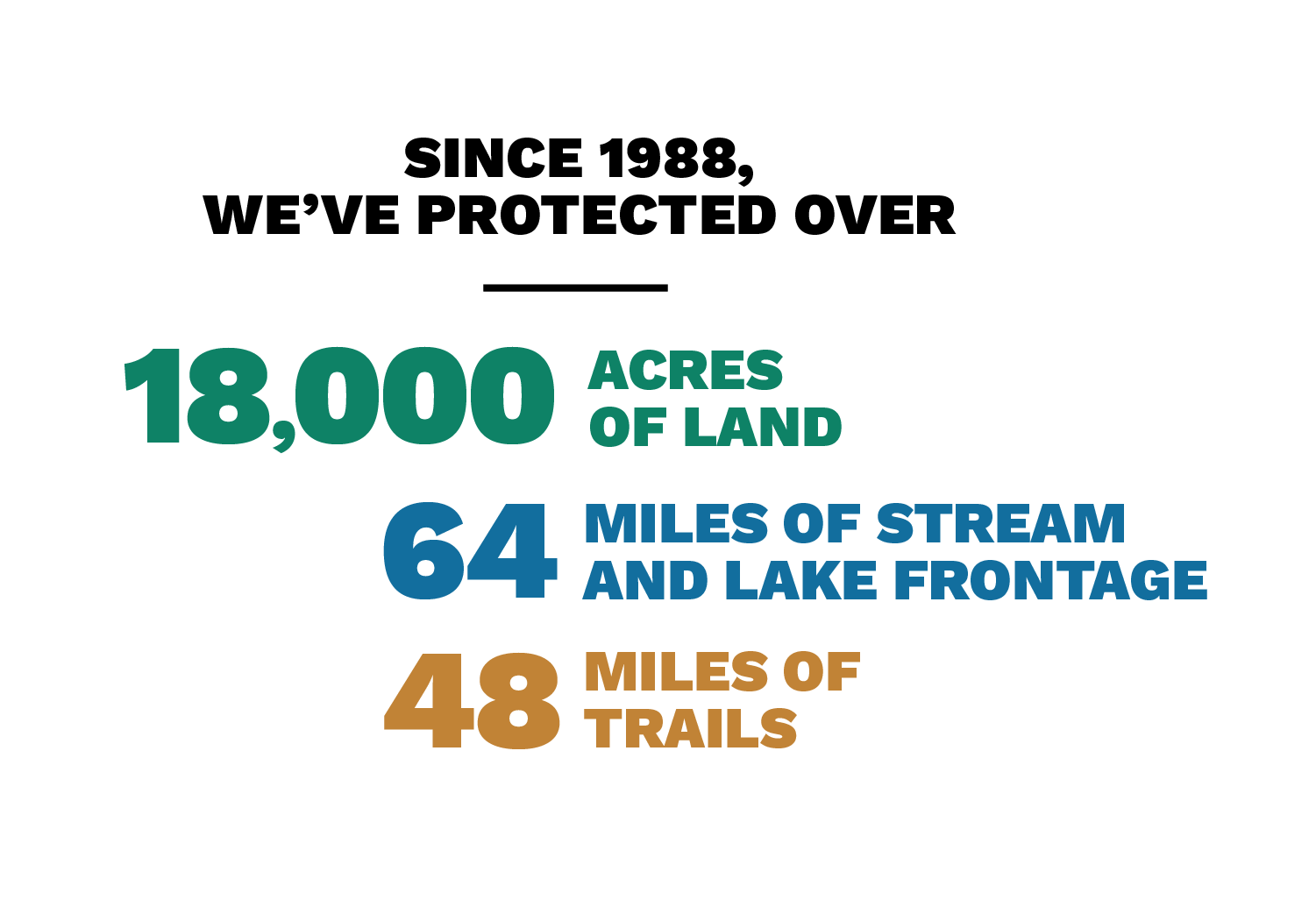Local Heroes: Sanborn Family Protects 43 Acres in Lake Leelanau Watershed
From our Fall 2005 Newsletter
There’s an ancient hemlock on the Sanborn/Robinson property that, some years back, brothers Will and Jeff could have taken a chainsaw to and turned a tidy profit on. “There was enough lumber there to frame a house,” says Will Sanborn. But would they consider chopping it down then or now? “No way,” says Will. “I’m waiting for a red-tailed hawk to nest there, and it’s filled with porcupines too. They need a home.”
Porcupines and hawks are part of the menagerie of wildlife that nest, spawn, and seek shelter in this 43-acre refuge along South Lake Leelanau near Bingham known as Birch Point. The land is largely primordial white cedar swamp with arguably six acres of developable upland. With its tangled wetlands, and diverse habitat uninterrupted by roads, the land is a critical corridor for wildlife and an important part of a giant filter that helps to keep the lake pristine.
On a gorgeous fall afternoon I walked the land with Jeff and Will and learned its history along with that of their family that has held it since 1878. Touring the land felt akin to being led through an old house or a museum. But instead of pointing out a cherished photograph here or explaining or an architectural feature there, we kicked stumps that told of logging days gone by, sat on a giant boulder that whispered of the glaciers, peered into tangled woodland that, if you listened hard enough, you could hear the laughter of two young boys playing hide and seek or building forts from fallen branches.
The boys and their two sisters grew up spending summers on this land, journeying to Leelanau as soon as school let out from whatever state they happened to be living in. Their father was a career naval officer and so it seemed that more than any place, Lake Leelanau always felt like coming home.
Summers were spent largely outdoors. “If we weren’t in the water, we’d be back here,” says Jeff, who is drawn into the woods across the street from his lakefront home almost daily. “It helps me sort out my mind,” he says. “I always come out feeling cleansed.”
As for Will, who also lives nearby, his endless hours in the woods have created an avid, self-trained naturalist. I recall our director Brian Price telling me that Will was such an observer of nature that he was the first to sound the warning bell that zebra mussels had arrived on the south lake. On the day of our walk, Will is full of observations as we traverse an old power line easement through the woods. Pausing to roll a cigarette from a pouch in a vest pocket, he fingers a wild rose hip and guesses its age. He lights the cigarette, then rubs open the hip and scatters its seeds.
Next he explains how the deep pocks in the mucky soil are from cows that got loose years ago and wandered into the field, and about the clay base that underlies the field. He tells me that if I were to venture into the swamp I might find a hole deep enough to sink up to my neck. A pair of grouse flits just off the trail. We see where deer have bedded down. Before I know it, two hours have passed and I have learned about everything from vernal ponds and traveling salamanders to how the dam at Leland has raised lake levels and created the wetlands his family is now preserving.
The family history and ownership of these 43 acres is complicated, but suffice it to say that the land has been in their father’s family since 1878. At one point, the Sanborns and their relatives owned 640 acres along Birch Point. The 43 acres now under conservation easement were preserved in two stages: a decade or so ago their mother, at Will’s urging, preserved the first 14 acres with a donated easement, saving out one acre for use with the lakefront home.
When a paternal aunt passed away in 2001, the remaining 30 acres were bequeathed to Jeff and Will, along with their sisters Lucinda Willis and Peggy Irving. Because they all wanted to see this land preserved too, the siblings entered into a bargain sale with the Conservancy this summer. They were compensated for restricting development to just a one-acre home site on the upland portion. The Sanborns were taking advantage of a one-time opportunity to sell a conservation easement through the Lake Leelanau Watershed Initiative (see related story on page 4). The family’s agreement to sell the easement for less than appraised value helps us to stretch our funds and protect more land.
The family can keep the land and it will continue to grow in value for their heirs. In the meantime they can enjoy it or sell it if need be, but the restrictions remain no matter who owns the land.
A heroic act: leaving money on the table, and personally ensuring these 43 acres will remain wild forever. “We could have made a lot more money if we had chosen to develop it,” says Jeff. “But Will and I love this property so much that there is no way we would have done that. To get paid for something we wanted to do anyway is a bonus. So we see it as a win-win.”
We stand under a canopy of mature trees. “We wanted to keep all of these beautiful beech and hemlocks,” adds Jeff, his arm sweeping around to take in the forest, “so that all the people who come after us can enjoy them too.”
Photo: Brothers Will (left) and Jeff Sanborn lean on a boulder left behind by the glaciers. Their wish: the boulder will forever stay where nature deposited it 10,500 years ago–nor will anything else be disturbed on this 43 acres.



